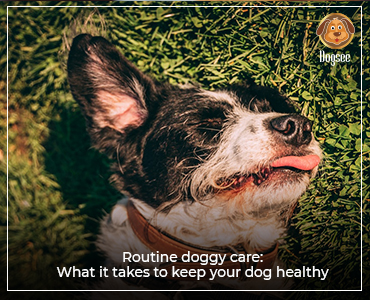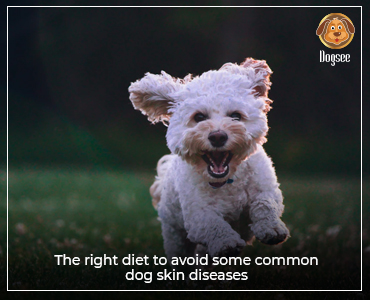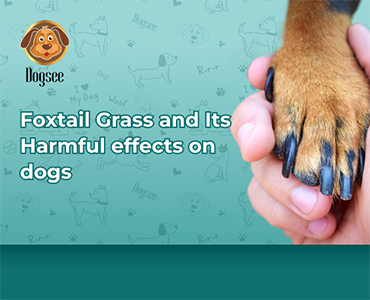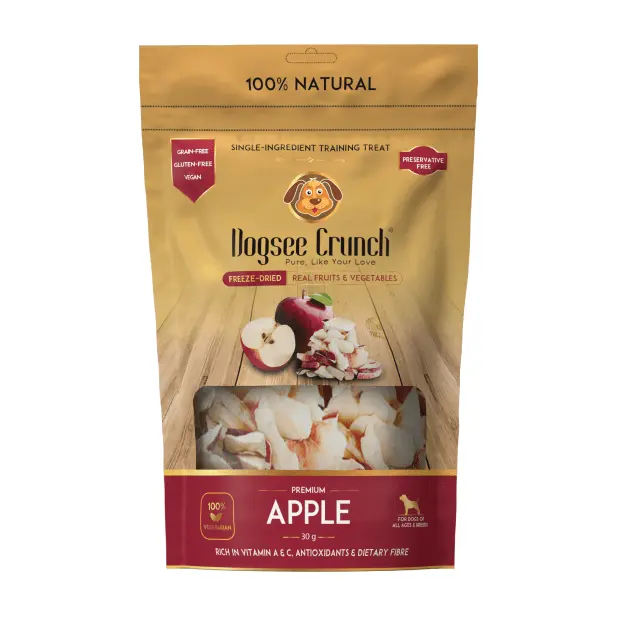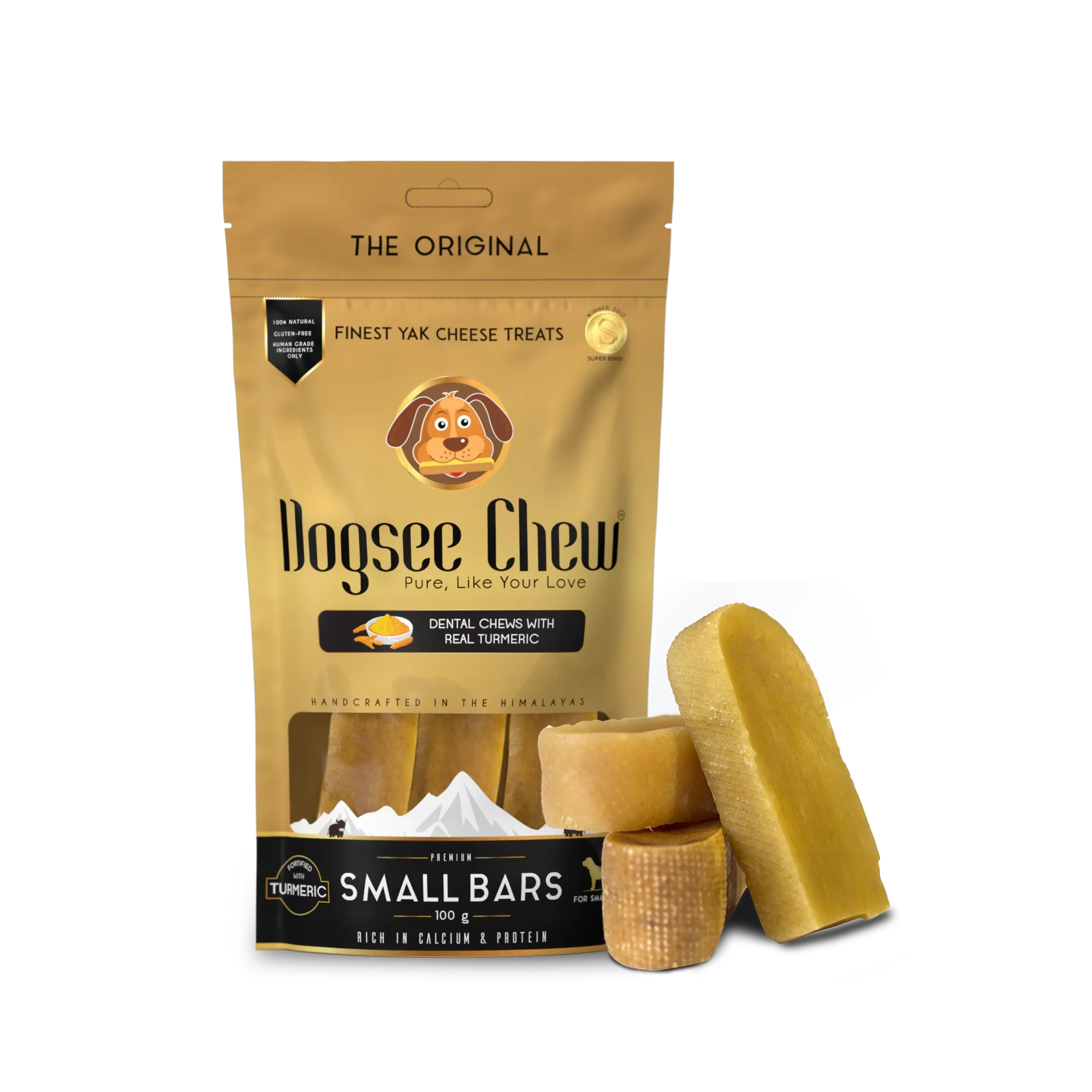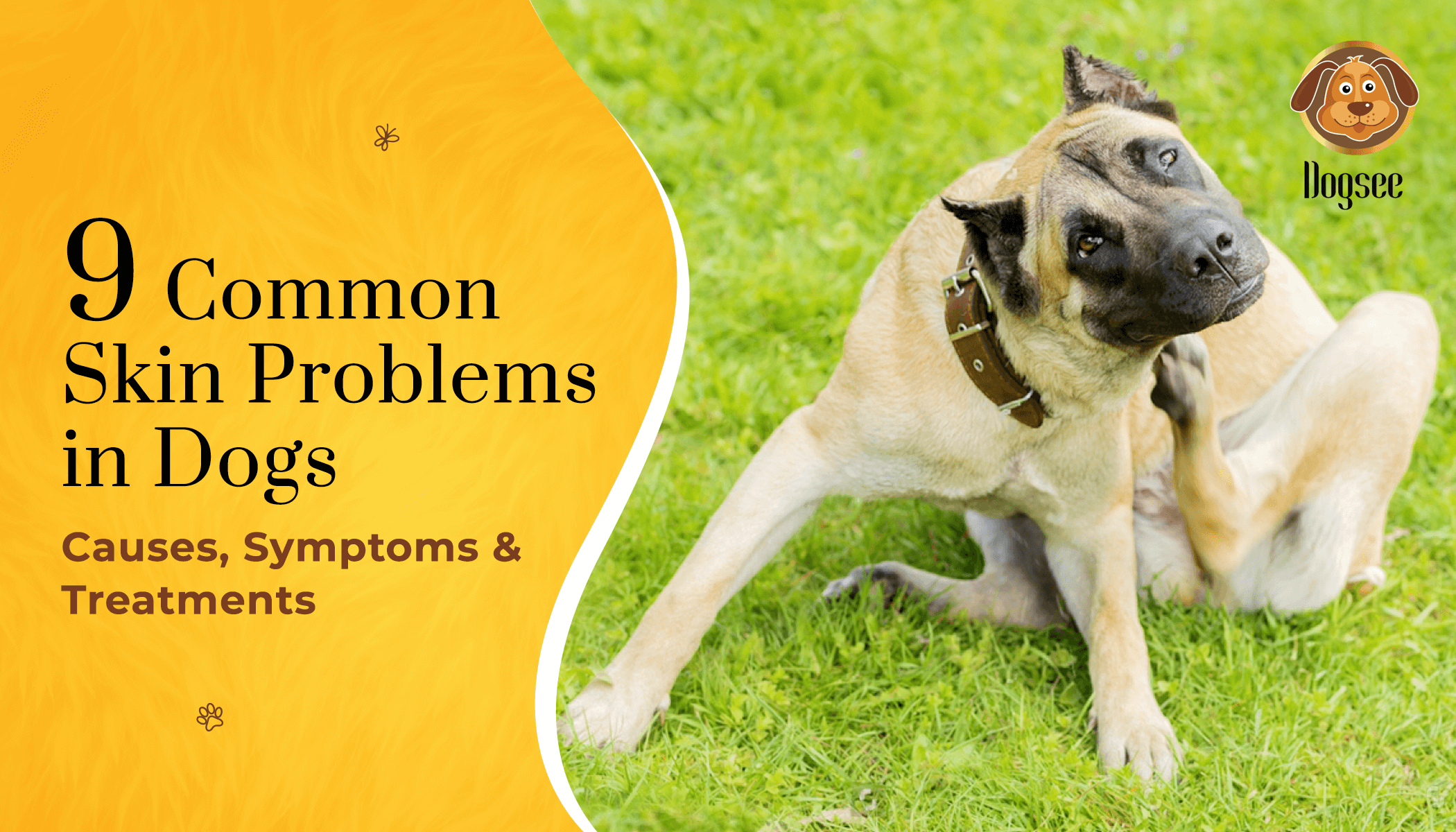
We've all had that moment when we’ve wished our furry friends could talk, especially when they won’t stop scratching and licking their skin, leaving us wondering…what’s wrong, baby?
Skin problems in dogs vary from mild irritations to severe conditions. Beyond just causing discomfort it signals underlying health issues that require proper care and attention.
Healthy skin is crucial for dogs' overall health and well-being. It serves as a protective barrier against external pathogens, regulates body temperature, and plays a role in immune function.
Continue reading, as we explain very commonly seen skin problems in dogs, tips to take care of, and healthy dog shampoos you can try on your pooch.
9 Common skin problems in dogs
1. Allergic Dermatitis:
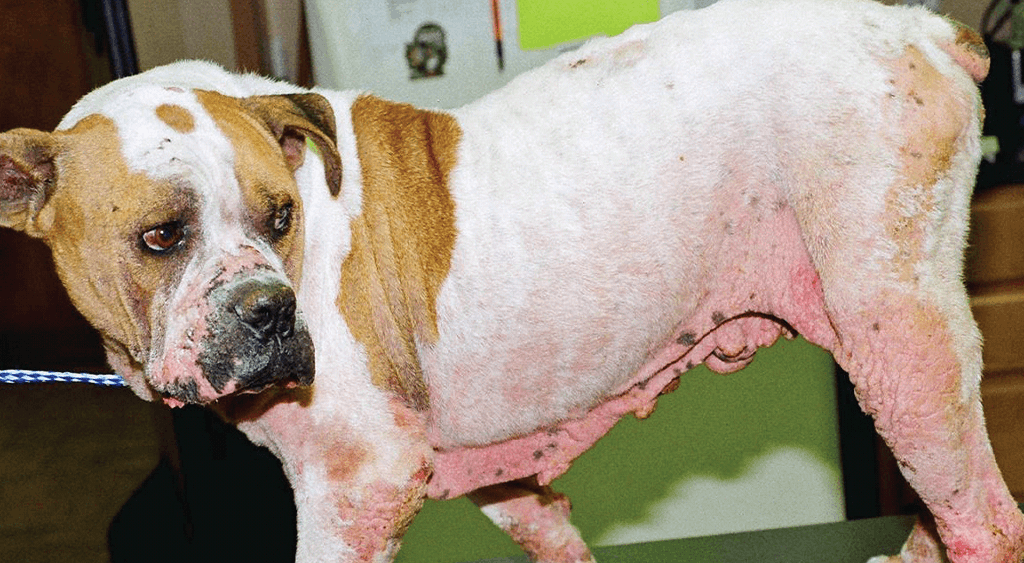
Image credits: Essential Dogs
Causes & Symptoms
Allergic dermatitis in dogs is caused by majorly two important factors.
Environmental allergies
Food allergies
Environmental allergies are caused when substances such as pollen, soil, grass, dust mites, and mold come in contact with your pet’s body. This can lead to symptoms like itching, licking, chewing, or rubbing, particularly on their face and paws.
Food allergies, on the other hand, are triggered by ingredients like wheat, soy, and certain proteins. When consumed it causes digestive intolerance and adversely affects the dog’s skin health.
Redness, inflammation, itching, and recurrent ear infections are a few common symptoms to watch out for.
Treatment Tip: The first step here is to identify and avoid the environmental or food allergen responsible for triggering skin infections. This may involve making environmental modifications, implementing dietary changes, and following other recommendations provided by your vet.
2. Ring Worms:
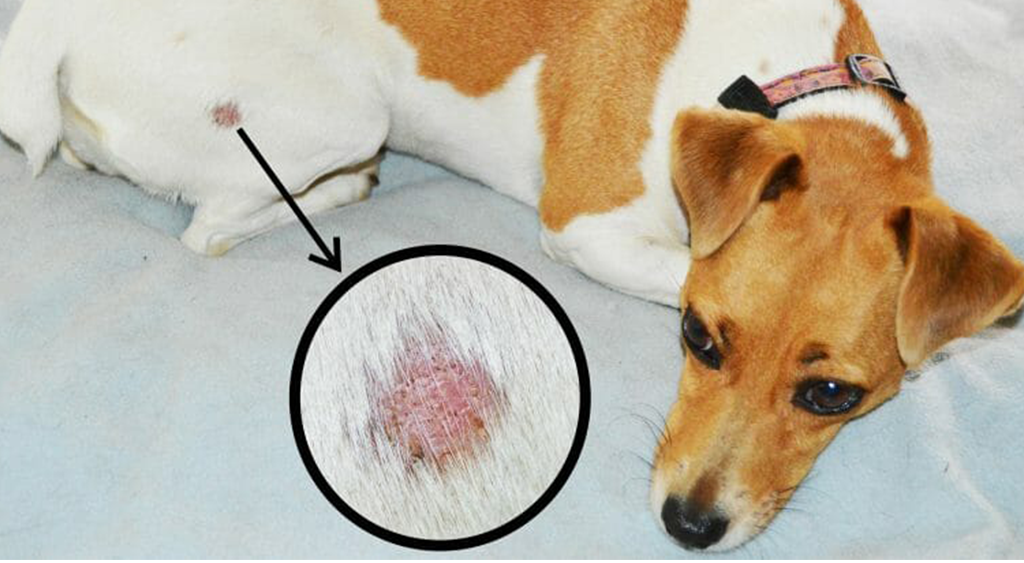
Image credits: Corydon Animal Hospital
Causes & Symptoms
Contrary to its name, ringworm is a fungal infection and not caused by a worm. While It’s highly contagious, dogs with less immunity are at greater risk of getting affected.
Symptoms include circular or ring-shaped patches of hair loss with red, scaly skin. It may be itchy, with raised bumps, or pus-filled lesions.
Treatment Tip: To treat ringworm infection, consider using antifungal shampoos, itch relief creams for pets, or oral medications.
Vets also recommend cleaning the dog’s environment, bedding, toys, and dietary changes to keep the coat clean and improve their immune system.
3. Pyoderma:
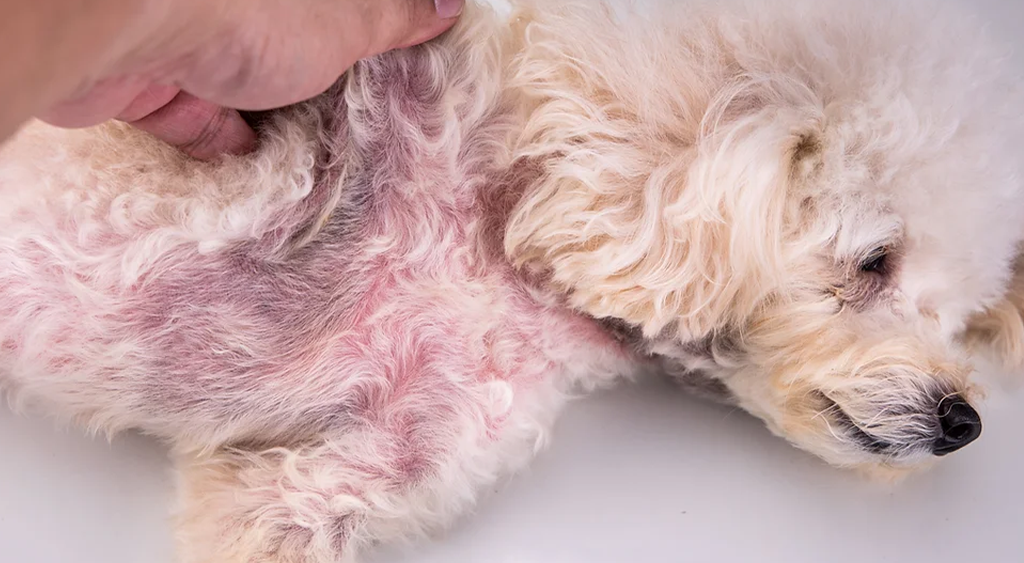
Image credits: MiDog
Causes & Symptoms
Pyoderma is a bacterial infection that occurs in dogs due to factors such as allergies, parasites, hormonal imbalances, or underlying skin conditions. Symptoms include inflammation, pus-filled bumps, and redness in the skin.
Superficial pyoderma affects the upper layers of the skin, whereas deep pyoderma is more painful and affects deeper layers of the skin and follicles.
Treatment Tip: Vets often suggest using specific medicated shampoos, sprays, and baths to soothe the skin and reduce inflammation. In addition to these basic measures, pyoderma is treated with oral antibiotics to eliminate bacterial infections.
4. Seborrhea:
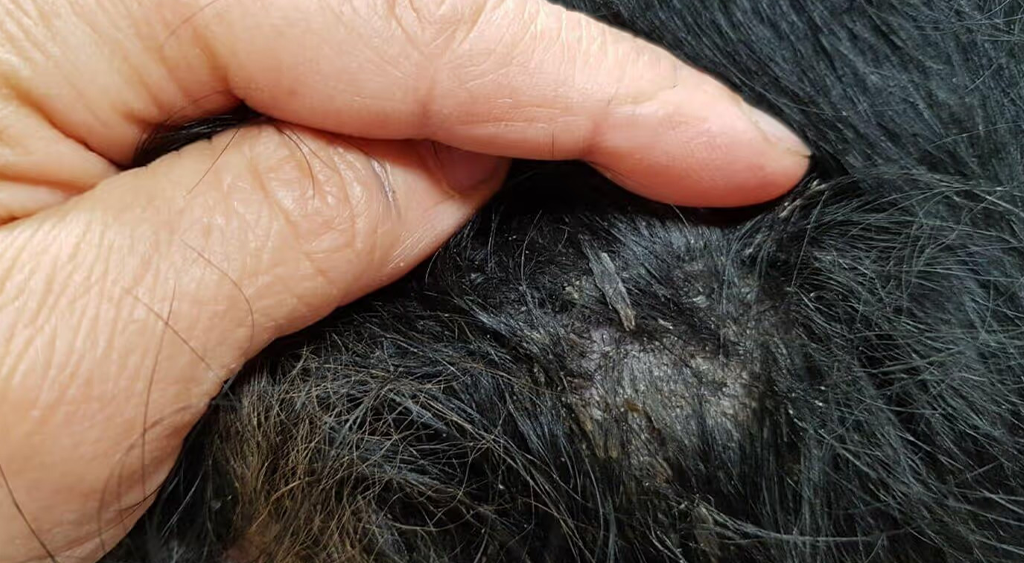
Image credits: Douxo
Causes & Symptoms
Seborrhea is a dog skin condition characterized by excessive production of sebum, an oily substance secreted by the skin’s glands.
Symptoms include flaky or greasy skin, a foul odor, and thick crusty patches. Parts of the skin worse affected include between the toes, on the belly, under the dog’s tail, under the armpits, and bottom of the neck.
This skin condition is also accompanied by other symptoms such as redness, excessive dandruff, itching, and hair loss.
Treatment Tip: Keeping the affected area clean is crucial to prevent further infections. Treatment options include bathing with medicated shampoos or applying topical creams to remove excess oil and scale.
Dietary changes and oral medications are recommended in more severe cases to bring infection to control.
5. Yeast Infection:
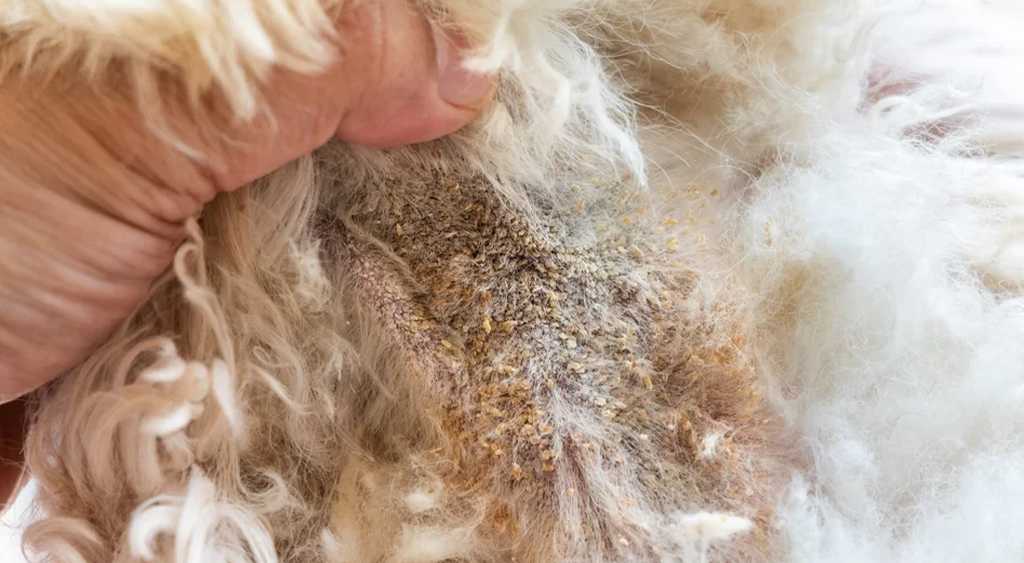
Image credits: MyBestBark
Causes & Symptoms
Yeast infections in dogs are typically caused by an overgrowth of Malassezia, a type of yeast, on the skin. Factors such as hormonal imbalances, allergies, or underlying skin conditions can contribute to yeast overgrowth.
Symptoms include inflamed skin, redness, greasy discharge, and odor. Doggos may also experience itching, licking, or chewing at affected areas, leading to secondary skin damage.
Treatment Tip: It can take several weeks to clear the skin from yeast infections. Make sure to follow the Vet’s direction to improve the dog’s immunity, and ensure regular grooming.
Treatment for yeast infections often involves using antifungal and antipruritic medications to eliminate yeast overgrowth.
6. Fleas & Ticks
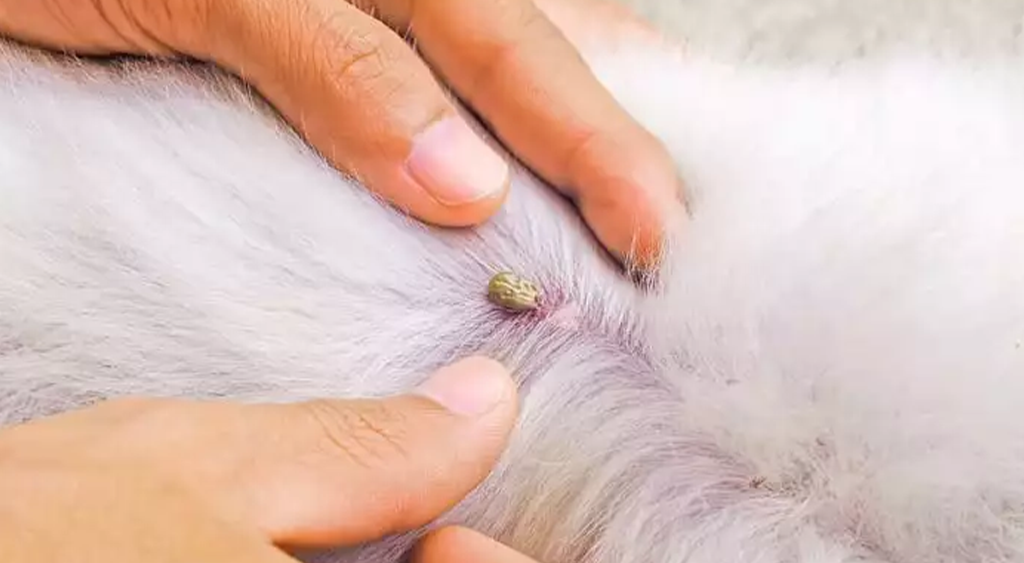
Image credits: Spring Valley Veterinary Hospital
Causes & Symptoms:
Fleas and ticks are the common external parasites found on dogs' coats or skin, feeding on their skin and transmitting viral diseases through their saliva.
Symptoms include aggressive scratching and chewing of the skin to relieve irritation, visible parasites, or flea dirt on the skin.
In severe cases, dogs develop allergic reactions, anemia from blood loss (in the case of puppies or small dogs), or transmit disease carried by these parasites.
Treatment Tip: Regular grooming and environmental cleanliness help spot and prevent fleas and ticks.
Consider using our ayurvedic and 100% natural dog shampoos - ‘Dogsee Veda’. Its anti-inflammatory and anti-fungal properties soothe itching and repel parasites.
Take your Vet’s suggestion regarding which flea or tick control creams or other topical applications to use.
7. Lupus:
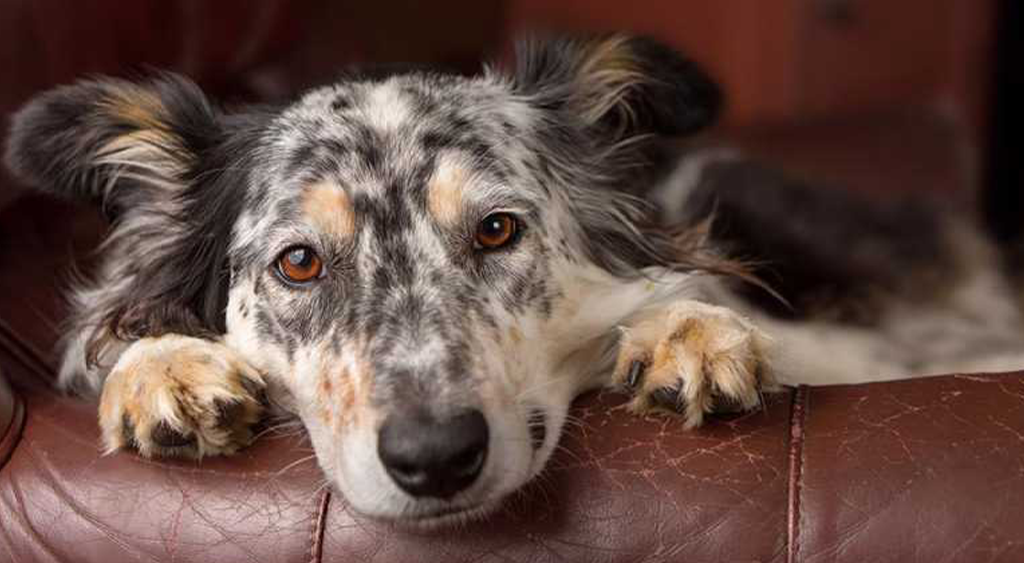
Image credits: Small Door Veterinary
Causes & Symptoms:
Lupus is an autoimmune disease that’s caused due to immune system dysfunction, where the body attacks its own cells.
Symptoms include scaling of the skin, hair loss, and lesions on the eyes, paws, and nose.
In some cases, your pup might experience joint pain, decreased appetite, and feel more lethargic.
Treatment Tip: The treatment focuses on suppressing abnormal immune responses with immunosuppressive drugs such as corticosteroids and Vitamin E supplements.
Additionally, incorporating antioxidants like Vitamin A, Vitamin C, and Beta-Carotene in the diet helps significantly improve the dog’s immune system.
8. Alopecia
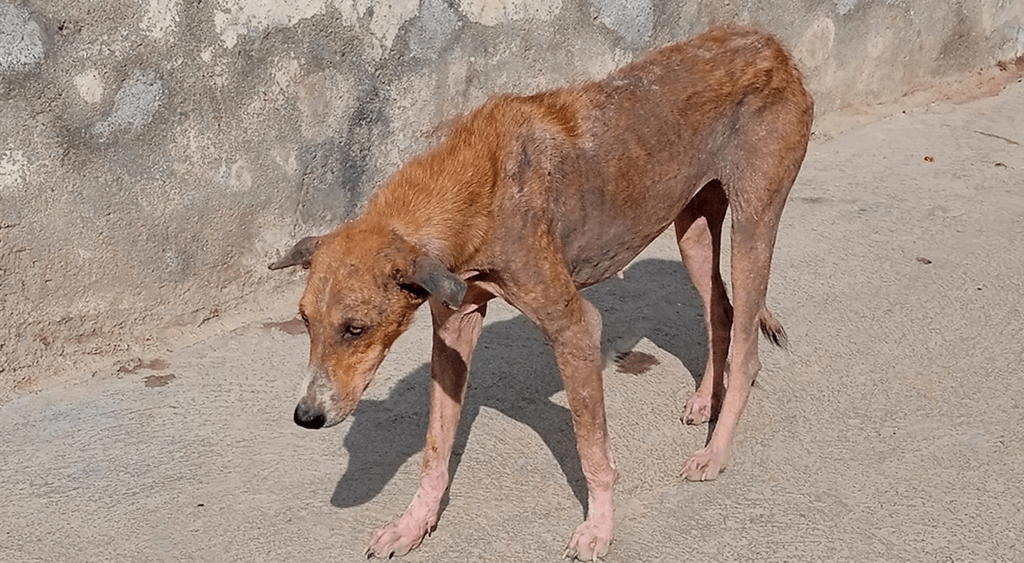
Causes & Symptoms:
Alopecia or hair loss in dogs can result from various health issues, including hormonal imbalances, allergies, parasites, genetics, and autoimmune diseases.
Symptoms include patches of bare skin or fur loss, in one or multiple areas on the dog’s body. It may also lead to irritations or itchy skin on dogs.
Treatment Tip: Identifying the underlying health issue is crucial to provide an effective treatment.
Measures may also include dietary changes, supplemental fatty acids, treating infections and parasites, and adopting proper grooming practices.
Do consider reading our blog: Amazing tips to keep your dog’s hair healthy & shiny
To better deal with hair loss issues in your pooch.
9. Mange:
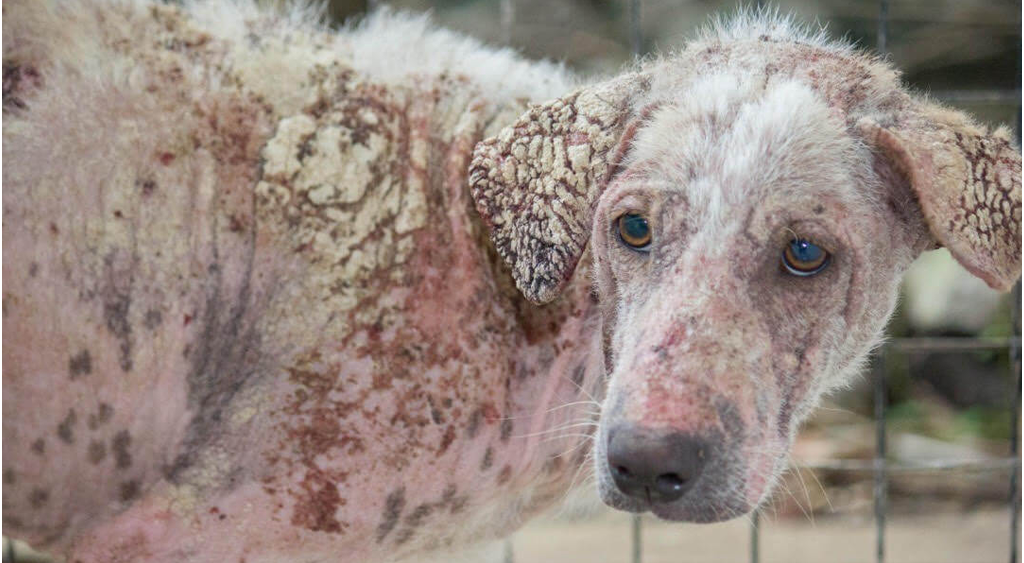
Image credits: IAPWA
Causes & Symptoms:
Mange is a skin condition caused by mites infesting the hair follicles and skin of dogs. Two types of mange exist: Demodectic mange (caused by Demodex mites) and Sarcoptic mange (caused by Sarcoptes scabiei mites).
Mites can be transmitted through direct contact with infected animals or contaminated environments.
Symptoms include bald patches on the face and around the eyes, redness, crusty, scaly, and thickened areas of skin.
Treatment Tip: Treatment for Mange often involves topical or oral medications to kill mites and alleviate symptoms.
Vets may also suggest medicated baths using special shampoos to relieve itching and improve the healing process.
FAQs on Dog Skin Issues:
1. How often should I bathe my dog to maintain a healthy coat & skin?
Answer: While bathing is crucial for keeping a dog’s coat clean, overbathing can strip natural oils from their skin, leading to skin problems.
The frequency of bathing depends on factors like your dog’s activity, breed, and coat type. Generally, dogs with long fur should be bathed every 4 to 6 weeks, while those with shorter coats can be bathed every 1 to 3 months.
Do consult your Vet for more personalized advice on grooming your pet.
2. Can stress or anxiety contribute to skin conditions in dogs?
Answer: Yes, stress to an extent can impact a dog’s immune system, making them more susceptible to skin issues.
Behavior changes like fur pulling, licking, scratching, and chewing can cause skin bruises and rashes. Addressing the underlying reason for anxiety can help prevent stress-related skin conditions.
3. Can certain dog shampoos worsen my dog’s skin condition?
Answer: Yes, that’s correct. Watch out for these harmful ingredients in dog shampoos. They can contribute to severe skin problems.
Sulfates: Harsh detergents like SLS and SLES can strip natural oils, leading to dryness and irritation
Parabens, artificial fragrances, and dyes: These preservatives can disrupt hormones, potentially cause allergic reactions, and irritate sensitive skin.
Whereas natural alternatives like our Veda range are formulated using ingredients like aloe vera, oatmeal, coconut oil, and tea tree, their medicinal properties promote healing and reduce skin irritations.
Our shampoos also maintain the natural pH levels of the dog's skin, this prevents dryness and helps maintain a healthy coat.
4. How does a dog’s age make them more susceptible to skin problems?
Answer: As dogs age, hormonal changes and weakened immune systems make their skin more prone to issues.
Regular veterinary checkups, grooming, and feeding a nutritious diet will help in effectively managing age-related skin conditions.
Skin Problems in Dogs: Final Thoughts
Taking care of our furry friends’ coats and skin is crucial for their well-being.
Take a moment to think and reflect: Are we dedicating enough time to their grooming and skin care? They can’t do much apart from itching and scratching to relieve irritations, but you know, you can do better.
Let’s commit to ensuring we do our part and keep them happy and healthy.
At Dogsee we understand how much you love your doggo. That’s why we are committed to making 100% natural, preservatives and gluten-free treats for their good health.
We also provide tons of valuable content like this on our social platforms too. Don’t wanna miss them right? Be a part of our community followed by more than 35k followers. Here are the links:
Instagram: https://www.instagram.com/dogseechew/
Facebook: https://www.facebook.com/dogseechew/
We hope you found this article insightful. See you in the next blog with another interesting topic. Thanks for reading, woof!
 HELPFUL0 people found it helpful
HELPFUL0 people found it helpful
Related Blogs
Subscribe to Our Blogs
and never miss on the latest update!











